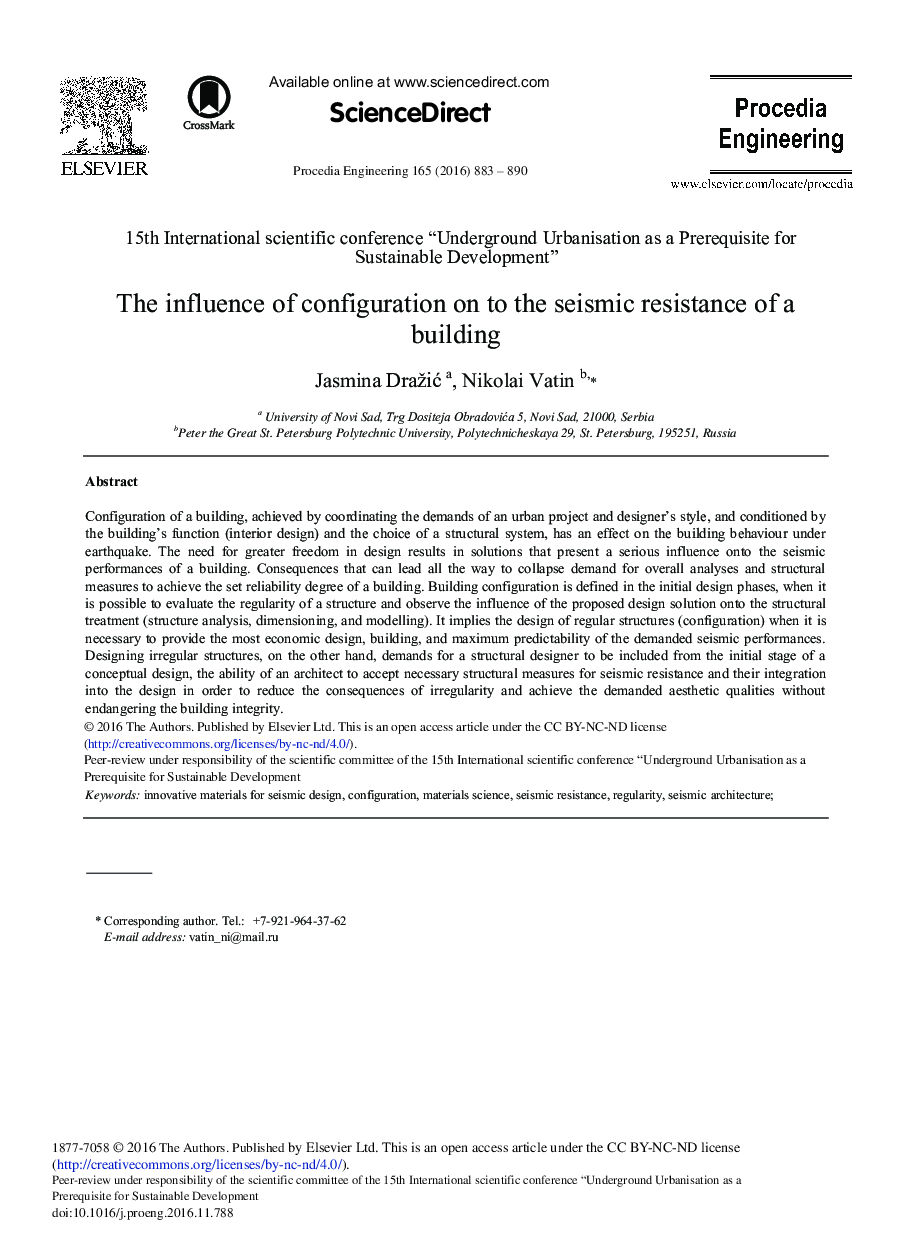| Article ID | Journal | Published Year | Pages | File Type |
|---|---|---|---|---|
| 5029627 | Procedia Engineering | 2016 | 8 Pages |
Configuration of a building, achieved by coordinating the demands of an urban project and designer's style, and conditioned by the building's function (interior design) and the choice of a structural system, has an effect on the building behaviour under earthquake. The need for greater freedom in design results in solutions that present a serious influence onto the seismic performances of a building. Consequences that can lead all the way to collapse demand for overall analyses and structural measures to achieve the set reliability degree of a building. Building configuration is defined in the initial design phases, when it is possible to evaluate the regularity of a structure and observe the influence of the proposed design solution onto the structural treatment (structure analysis, dimensioning, and modelling). It implies the design of regular structures (configuration) when it is necessary to provide the most economic design, building, and maximum predictability of the demanded seismic performances. Designing irregular structures, on the other hand, demands for a structural designer to be included from the initial stage of a conceptual design, the ability of an architect to accept necessary structural measures for seismic resistance and their integration into the design in order to reduce the consequences of irregularity and achieve the demanded aesthetic qualities without endangering the building integrity.
